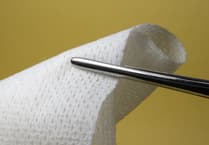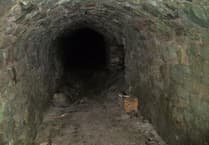On the (one) sunny day we had last week, I counted a staggering 35 butterflies on the white buddleia davidii in my garden. It was a beautiful sight. The common name for Buddleia (sometimes spelled Buddleja) is the Butterfly Bush because it is such a rich source of nectar, but even so, I don’t ever recall seeing so many butterflies on a single shrub.
I like buddleias. Most gardeners seem to condemn then as a weed and even the RSPB warns, “It has become increasingly clear that Buddleia davidii can be highly invasive. It produces lots of small, light seeds, which spread extremely easily. It can grow in many places, even in cracks in buildings several floors up. Buddleia davidii can form thickets in places like disused industrial sites and railway sidings, and natural habitats like chalk grassland. These places support a large number of invertebrate species, some of which are rare and endangered. B. davidii can quickly cover open ground – which means those special species can no longer live there.”
I am not so harsh on them. I think if you manage them properly then they are hard working, amiable shrubs that are great for bees, butterflies and moths. They are ‘determined’ and will self seed shamelessly, but if you cut back the flowerheads once they fade, or simply pull up seedlings, then you are in charge. Cutting back flower stems that have bloomed, to a strong pair of shoots will often result in a second flush of blooms.
A lot of its bad press stems from neglect by gardeners. It’s an enthusiastic shrub that can quickly become untidy and unruly if not pruned and cared for. Annual pruning will keep it in shape and ensure that flowers are produced lower down the shrub.
Prune Buddleia davidii in early spring when new growth starts appearing and the risk of a hard frost has passed. It is very forgiving and you can cut it to whatever sized framework works for your garden. Prune all the stems leaving two or three sets of good buds which will give it a chance against any late frosts. Remove any weak, damaged stems – they can be quite brittle and are easily damaged.
Buddleia davidii enjoys a good pruning and neglected shrubs can be rejuvenated by cutting back hard. There are also new breeds of ‘true’ dwarf Buddleias that will only grow to 2-3ft (60-90cm) so choose one of these for a small space or even a pot. The butterflies love this size too!
However, Buddleia alternifolia and Buddleia globosa both produce flowers on old wood, so cutting them back in spring would mean no blooms the following year. Buddleia alternifolia should be pruned as it finishes flowering in midsummer and Buddleja globosa should be pruned just to maintain a good shape or remove dead and damaged shoots before the start of new growth.
Most of the butterflies on my Buddleia were Red Admirals, whose numbers have soared by 400% this year, according to new data from Butterfly Conservation. Despite the previous extreme summer droughts in 1976 and 1995 which took a heavy toll on butterflies, the wildlife charity say they have tallied up 170,000 sightings so far, an enormous increase on last year.
Traditionally, each spring and into summer the Red Admiral would usually travel from North Africa and continental Europe to the UK to lay eggs, hence the boom in fresh butterflies from July onwards. Scientists say that the increased numbers indicate that the species is now overwintering in the UK, particularly in the south.




